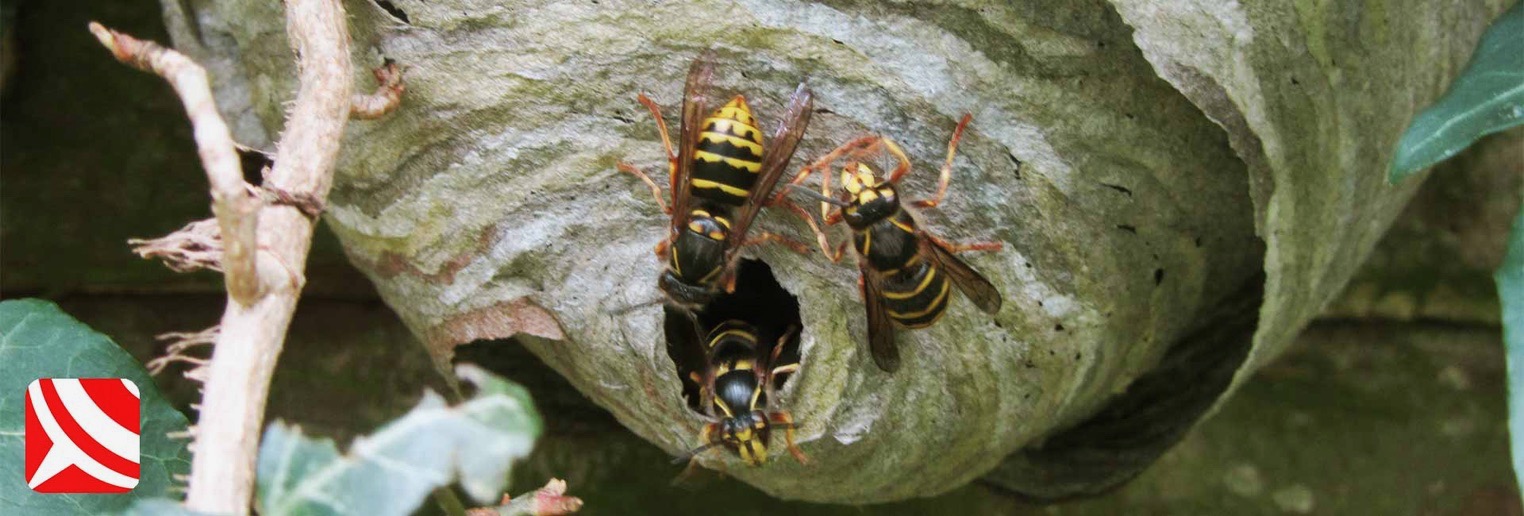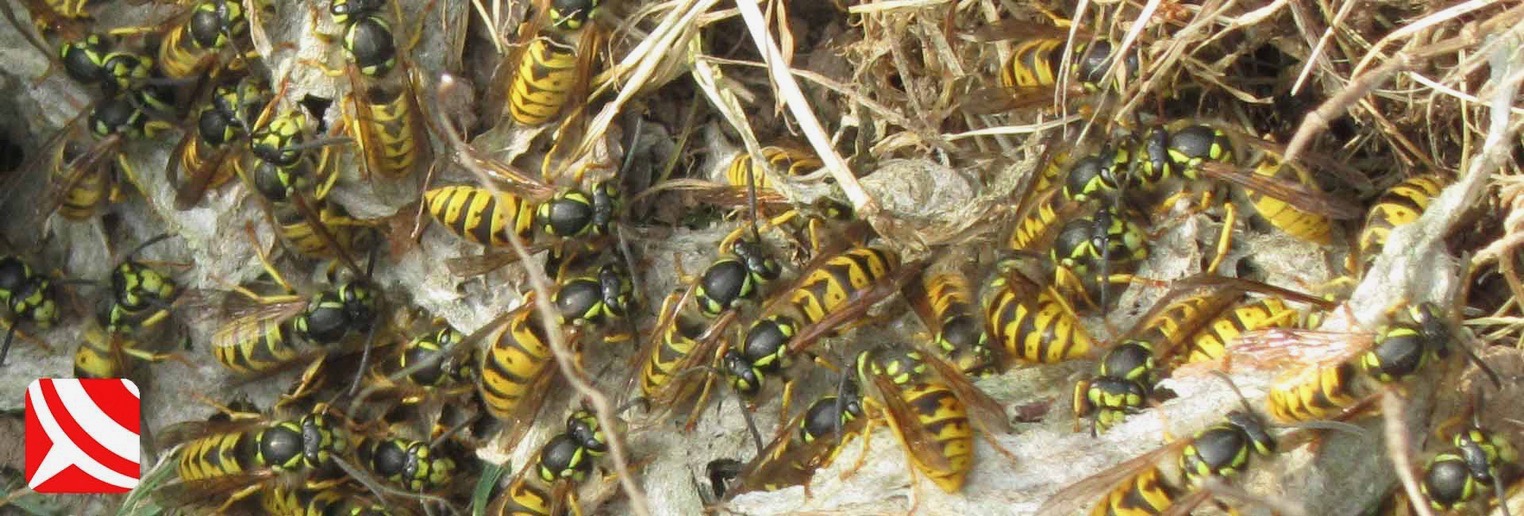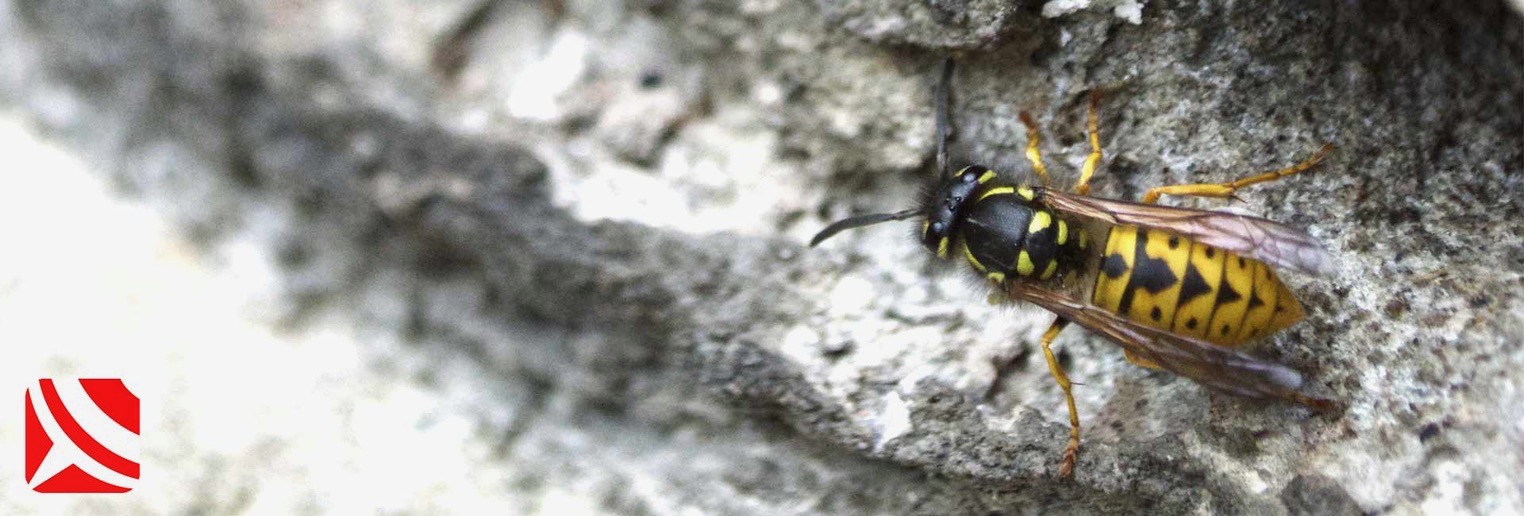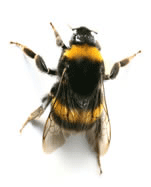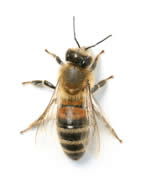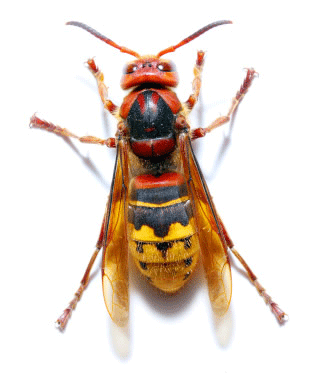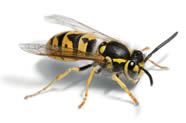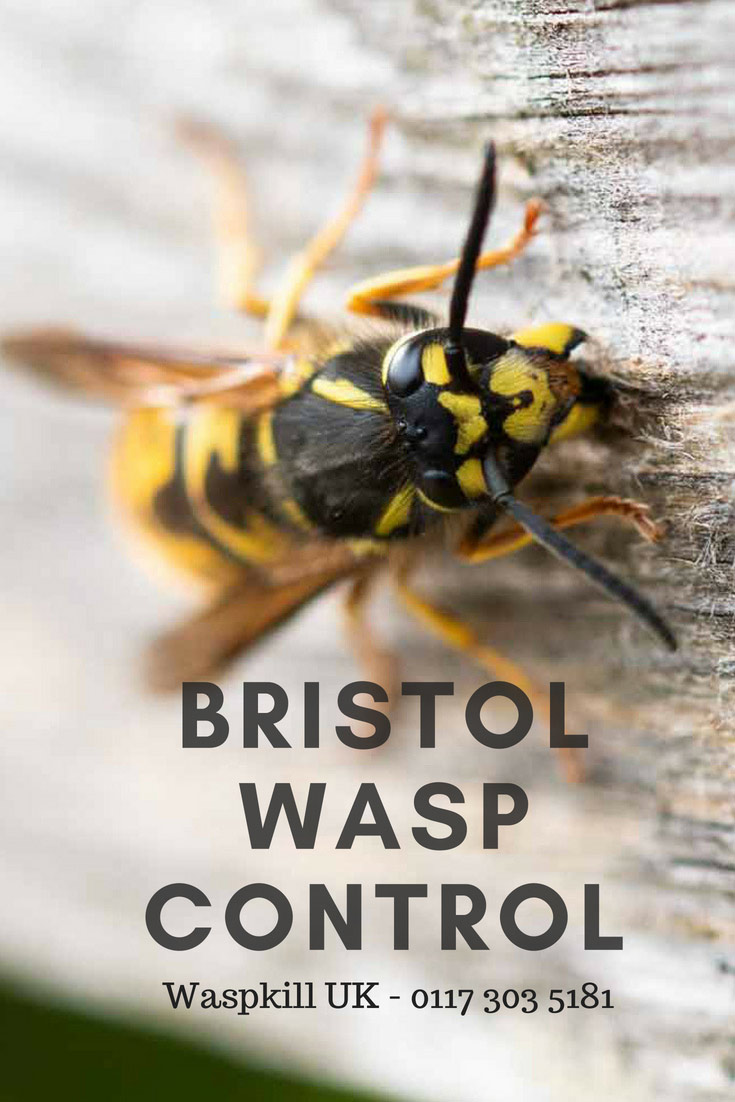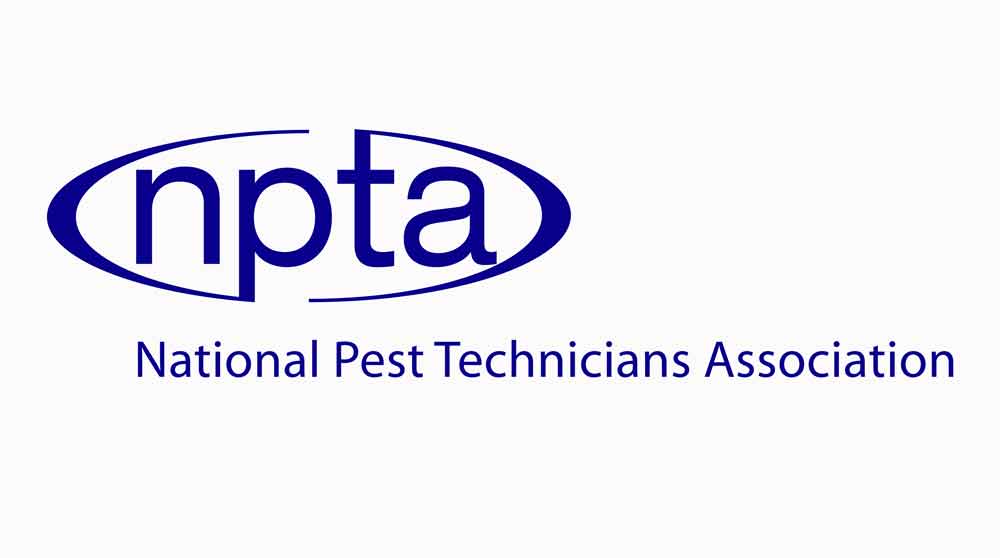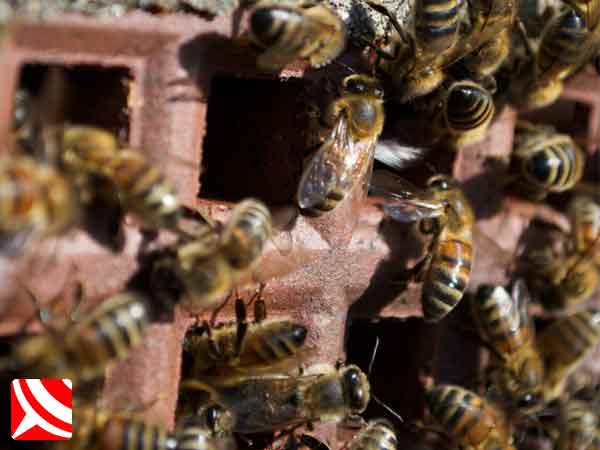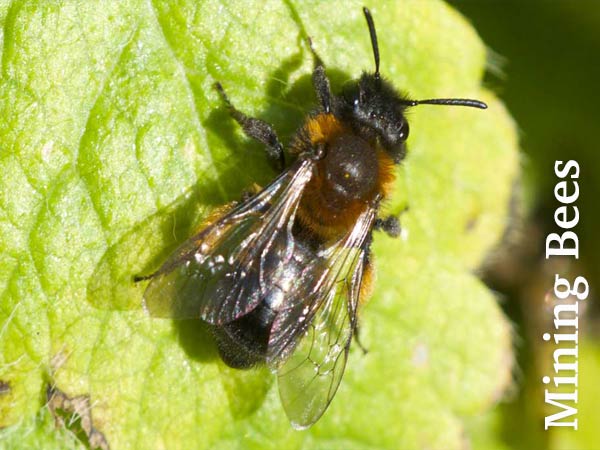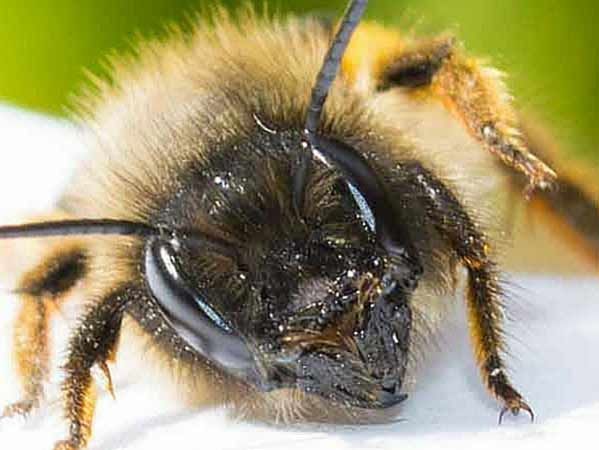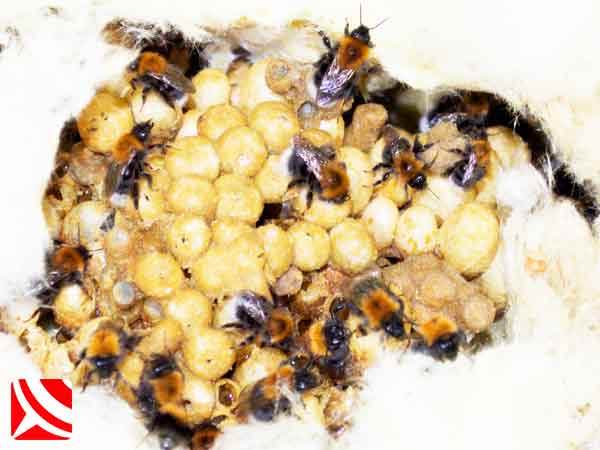Wasps Control That's Guaranteed!
First is a Bumble Bee then a Honey Bee a Hornet and Finally, a Wasp. It is clear to see the differences between them. If you have wasps, then read on.
Check out our Wasp Swarm Video.
Wasp Hives and wasps nests are the very same thing. Our Bristol wasp removal and control services are faster and more flexible than other wasps control providers, because of our expertise.
How Fast Is Your Wasp Nest Removal Service?
We are often on site in less than an hour, and wasp treatments take from 15 to 60 mins to complete. Our standard, same day Wasp Nest removal Service for Wasp Removal in Bristol is always available, and our Emergency Wasp Removal Service operates 24/7 so help is never far away.
Safely Eliminate Wasp Nests: 0117 303 5181
Your Bristol Wasp Control service begins with a comprehensive inspection, establishing the location, size and number of wasps nests present. We do charge a small inspection fee, refundable against any treatment carried out and should you need help again; you will benefit from a generous discount with our customer loyalty scheme.
About British Wasps
How Do Wasps Defend The Nest?
Social Wasps defend their nests aggressively if threatened or attacked, as will other members of the order hymenoptera such as Honey Bees and Red Ants.
What Happens When You Disturb a Wasp Nest?
When a wasp stings you it releases a pheromone or chemical that quite literally marks you as the threat. This pheromone then alerts other members of the cast within the colony that the nest is in danger and more wasps join the attack.
Don't worry though; you need to be within a few meters of the nest for this to work efficiently, meaning that wasps away from their nest are not likely to react in the same way.
Are Recently Disturbed Wasps Nests Safe?
A Primed Nest - is a wasps nest that has already been disturbed, e.g. by a football getting kicked at it; and is extremely dangerous! Wasps from the initial sortie, happy that the threat is gone, will often rest on the outer surface of the nest.
If the nest is then subsequently disturbed, the resultant response from the nest will often be significant and very, very fast. You will not outrun them!
Disturbed nests should be avoided for at least half an hour to be considered reasonably safe. Of course, not every nest reacts in this way, but it is important that people are aware of this under-reported behaviour in wasps, especially people with young children.
Do Wasps Die After Stinging You?
No! Not unless you squash them! The honey bees sting is barbed, and once delivered will remain embedded in a predator, but the wasp's sting is used for subduing prey and as defense, so it can use its sting all day long without being affected.
What Is A Wasps Sting?
A Wasps Sting or Wasp Stinger as it's also called is an incredible piece of kit. It's designed to work a little like a cerated knife that actively punctures and lacerates the skin, driving deep into the dermis where it delivers the venom.
The wasp's sting is not barbed like that of the honey bee, which uses its sting purely in defence, instead, it is used for subduing prey, to be returned to the nest for consumption by the wasps hungry grubs. This is why the wasp can and often will sting you multiple times without any trauma to itself (unless you squash it!).
Are All Wasps Nests Dangerous?
Temperament varies in both the wasps themselves and the nests they come from, which means the response from a nest to a given threat will vary depending on some key factors.
You can, for instance, have two nests of the same species of wasp, in similar locations, and one will respond very aggressively while the other will barely register your presence.
What Makes Wasp's More Aggressive?
Factors that may serve to influence the wasps aggression or response to a perceived threat include - temperature, nest size, and nest maturity.
It's well, established through our observations that wasps nests tend to become more of a risk as they mature and the number of workers begins to outnumber the larvae.
Fewer larvae results in a shortage of the sweet sticky treat the hungry adult wasps harvest from the larvae, and the colony becomes an increasingly dangerous place to reside.
These high risk-wasp nests appear to be the most unpleasant to try and treat, as being swarmed by nests going through this cycle of maturity is increasingly common as we move into late summer.
Temperature also plays its part, and we find that activity becomes frenzied as the temperature climbs into the high twenties and beyond, making early morning and late evening the safest times to manage the control of large or high-risk nests on footpaths or in busy urban areas.
The linear flight path of wasps means that they fly in a straight line, too and from the nest. When foraging for food, the flight behaviour changes to non-linear.
We observed that when a wasp has fed or acquired building material for the nest, it launches into the air and climbs vertically in a spiral to re-orientate itself - thus ensuring it knows its way back to the nest.
Breaking the invisible linear flight path, too and from the nest, immediately makes you a threat and a target. If you watch wasps leaving the nest, they are very much on a mission, and they will head out in different directions.
As you get closer to the nest, you begin to interrupt this flight pattern, and if you get too close, you will inevitably get stung or even swarmed.
What To Do If You Disturb A Wasps Nest
Science tells us The trick with wasps is not to panic. Every wasp is equipped with compound eyes very sensitive to movement and the more you wave your arms and move your body, the bigger the visual signature, and thus the threat you pose could become more prominent.
The best thing is to back away slowly in a straight line as this creates the lowest visible movement signature.
Common Sense tells us that Running like hell in a straight line also works, as it is unlikely that they will be able to catch an adult with proper mobility running at full tilt. Wasps can fly at 14 mph, and most people can outperform this speed when their natural fight or flight reactions kick in.
Unfortunately, the terrified victim tends to run in a zigzag, merely cutting down the distance covered, making them slower, while waving their arms around and yelling in panic. This gets people into trouble, but at that point in time, they probably won't be thinking logically.
How Will A Wasps Nest Attack You?
When stung by a wasp, the wasp does not just inject venom it also releases a chemical that effectively marks you as the threat, allowing other wasps to attack with greater effect. The closer you are to the nest when this happens, the higher the chances are that other wasps in the colony will be alerted to the perceived threat you represent.
Other factors that may influence the number of times you get stung might include, wind strength, the size of the nest entrance and the nest's proximity to it, temperature and time of day.
Wasps fix themselves onto the victim, clasping onto skin and clothing with sharp spurs on the feet and rotate the abdomen, delivering multiple stings in a circular motion.
They often attack directly towards the face although the median wasp will usually fly above the threat and dive down onto the victim, delivering a single sting that punctures deep into the skin where they deliver the venom.
Remember the sting of the wasp is defensive and functional for subduing prey the honey bee, on the other hand, uses its sting only for defense so has a barb on the sting to keep in place.
Sometimes if you leave a bee in place (although the usual reaction is to whack it!), it can sometimes wriggle the sting free and fly of uninjured. A wasp, on the other hand, can sting as often as it likes as the sting is nothing less than a very effective hypodermic needle.
Wasp Nest Disposal - Is It Worth It?
Wasp nest disposal is rarely worth the effort. The nests once dormant have low humidity and are essentially just paper. Removal of the wasp nest will not prevent future queens nesting in the same area or cavity and if pesticides have been used on the nest then you may contaminate other areas for no particular benefit.
The dust based pesticides used are often residual in activity and remain active for years and this might knock down a queen wasp looking to nest near the treated wasps nest.
Wasps are found worldwide and scientifically classified as:
Kingdom - Animalia
Phylum - Arthrop
Order - Hymenoptera
Suborder - Apocrita
Infraorder - Aculeata (stinging wasps)
Family - Vespidae
Genus - Vespa, Vespula & Dolichovespula
Species - e.g., Vespa Crabro
Social Wasps are described as eusocial, so what does this mean?
As illustrated in the paragraph above, the wasps we are about to consider belong to the family Vespidae and are what we called eusocial. This means that these wasps have the highest order of vertebrate cooperation, identified by the presence of three key features.
- Reproductive division of labor (with or without sterile castes)
- Overlapping generations
- Cooperative care of young
Social Wasps and The Colony or Wasp Nest
The History Of Wasps
Hymenopteran insects, e.g. ants, bees, and wasps, are said to have first appeared in the Triassic Period more than 200 million years ago.
A large number of Hymenoptera are incredibly social insects, For example, honey bees, ants and social species of wasps have developed regimented social systems in which members are divided into worker, drone, and queen castes. This is referred to as eusocial.
The first reported account of a Wasp and for that matter anaphylactic shock was described historically by the Egyptians who tell of a monarch who died from a wasp or Hornet sting in 2621 BC. The ruler in question was King Menes who reportedly spent his sixty years or so, establishing and developing the Egyptian civilization.
It is said that he was killed by a "Kheb." This word when translated from Egyptian means Wasp or Hornet.
Wasps are called many things over the summer months that would probably be seen as unhelpful here and a little rude. Colloquially, wasps have been known as "jaspers" in the southern half of England, although it is not clear whether this refers to the Latin name "Vespa" or the striped abdomen, which echoes the striped mineral jasper.
Across the water, in the states, they are commonly called yellow jackets, and in other countries around the world, the local people are likely to have their own slant on what to call them.
Wasp Behavior and Factual Information
The family vespidae is a considerable and diverse group, made up of over 6000 species that are found throughout the world with more species being discovered on a regular basis. The social wasps within this family live cooperatively in a nest that is referred to as a colony.
This colony will be made up of females the Queen and her female workers or daughters.
All UK wasps are all clearly identifiable by their black and yellow/orange warning decoration designed so it would appear to help predators learn quickly that these insects are not as tasty as they might seem.
Although badgers, in particular, do not seem to care, and enjoy the opportunity of the tasty treat that the freshly excavated nest represents in terms of wasp grubs.
How Does a Wasp Nest Start?
Most UK social wasp colonies begin in the spring when the hibernating queen is triggered to emerge by the warmth of the first mild days of spring.
At this time of year the newly emerged queen is at great risk as she lacks a nest to protect her from late frosts and until she has fully recovered from her long sleep is lethargic and unable to fiercely defend herself. She will also be one of the few large insects around in early spring so is an obvious target for predators such as birds.
Ants are also predators of wasps and given the opportunity will attack them. Wasps however secrete a substance around the petiole or (the stalk that attaches the initial structure of the nest to whatever is supporting it) of the nest that acts as a repellent, preventing ants from taking advantage.
Before the queen can begin laying eggs she first needs to regain her strength and ensure she gets the nutrition required to allow her egg laying organs to mature. She normally does this by aiding early pollination of plants as she consumes carbohydrate rich nectar and sap.
Why Do Wasps Choose a Nest Site?
It is believed, but not proven that wasps will return to the site of an old nest by the presence of a pheromone which is a bit like a form of chemical signature left by the structure or biochemical footprint of an old nest.
It is generally accepted that wasps don't use nests abandoned by previous colonies, with the exception of the Hornet (Vespa crabro) where verbal claims have been made that they will use an old nest, although the author has not seen written evidence of this. What often see wasps re-nesting in the footprint or remains of an old nest.
What has also been seen (in numerous loft spaces) is that wasps of a particular species do seem to nest in the same space year after year.
Sometimes there will be a gap of some years, yet it is not uncommon to see clusters of nests that have the same characteristics of size and colour in loft spaces suggesting that the same species has nested in the same loft on subsequent occasions.
Sometimes a new species will nest where other species have and at the same time, seemingly without upsetting one another, although they usually use different entry/exit points.
Depending on the preference of the queen, which may vary from one species to another in respect of most popular locations, a nesting site may be established in all manner of places.
Some nests are subterranean (below ground) in disused rodent burrows or in naturally occurring hollows in trees or tree root systems and are sometimes called lawn wasps. Others will nest in terrestrial nests (above ground) in structures such as houses, outbuildings, bird boxes and compost bins.
Finally, we have aerial nesters or those that prefer to nest in trees and shrubs or on the sides of structures - from guttering, etc. Aerial and subterranean nests are often the most dangerous, and this is because unsupervised pets and children only discover there presence once they are literally on top of, or next to the nest.
When wasps are nesting in a confined or restricted space they will often what they can to enlarge it. Honey bees differ in this respect as they will simply try to find a better place to nest, but the wasp can ill afford this luxury and will simply excavate whatever is in the way.
If the nest is resting against a ceiling or wall that is constructed of plaster board, the wasps will simply eat through it.
Often the sound they make as they excavate the wall will keep the occupants of the room awake and just before they thy penetrate the surface you can sometimes see a very feint brown stain, letting you know in most cases that all that separates you from them is a layer of paint.
Another reason for nesting in a particular place is believed to be linked with the odour produced by different species of structural timbers e.g. Cedar and Oak.
It is thought that these timbers contain scents that act as a natural attractant to the queen just as it is believed that the workers collect nest building material from particular types of timber with different scents and properties which give each species of wasp a nest with distinctive colour, texture and shape.
Wasp nests simply made from whatever material is most abundant and this is invariably chewed up (masticated) timber, mixed with water and saliva to form wood pulp, essentially paper. This is why social wasps are often referred to as the paper wasps.
This material is very easy to collect and use and once dry is very, very resilient to prevailing climatic conditions.
A nest in a tree can remain in place for some years before finally disintegrating and in lofts this process can take decades.
Non Timber Wasp Nest Materials
Many nests are located in areas that take advantage of non natural materials that would appear to offer strategic advantages in terms of shelter or strength. Whether this is by chance or by design remains the secret of the queen wasp.
In some species workers are not always so fussy with materials, and it is commonly seen that the nest of the median wasp will have blue or green streaks in its wall from the protective plastic material that covers the springs on children's outdoor trampolines.
Another common material is loft insulation. Some types of loft insulation lend themselves very nicely to wasp nest formation and provide the wasp nest with a degree of camouflage.
Wasp Nest Construction and Formation


The queen wasp will begin building her nest by first establishing a petiole or short supporting spindle on which to mount the first module or layer of hexagonal brood cells. This module is in the shape of a small disk divided into approximately sixteen hexagonal brood cells or chambers.
This number can vary considerably but you get the idea.
Once the queen has constructed this and surrounded it in a thin outer shell it looks a little bit like a golf ball with colours ranging from grey to almost yellow depending on the timber used for the construction.
The next phase for the queen wasp is the laying of a single egg into the base of each new cell. Over the coming three to four weeks (depending on temperature and external conditions) the queen wasp will raise the developing larvae, feeding them on a diet rich in insect protein.
She does this (and her emerging daughters or workers will also do this) by finding insects and insect larvae (caterpillars are popular) and injecting them with venom. The venom injected disables the prey by paralysis and allows the queen to dissect the prey as required.
Caterpillars are often taken to the nest whole, but flying insects have the head, legs, wings and abdomen removed as the central unit of the body has the greatest protein concentrations as a result of containing the powerful muscles responsible for flight and articulation of the legs.
These little nuggets of protein are brought back and fed to the developing brood. It has also been recorded that wasps will carry out a pest control service for cattle, horses and pigs by picking of flies and other parasites both from the body of the animals and from animal housing.
As the larvae pupate the queen is freed up to continue nest construction and as the first brood begin to emerge the queen immediately cleans empty chamber and lays another egg into it. As the brood grows the petiole is enlarged and yet another, larger horizontal layer or disk is created.
Where space is confined such as in wall cavities, subsequent layers may be created to fit the cavity.
Wasp Larvae and Pupae
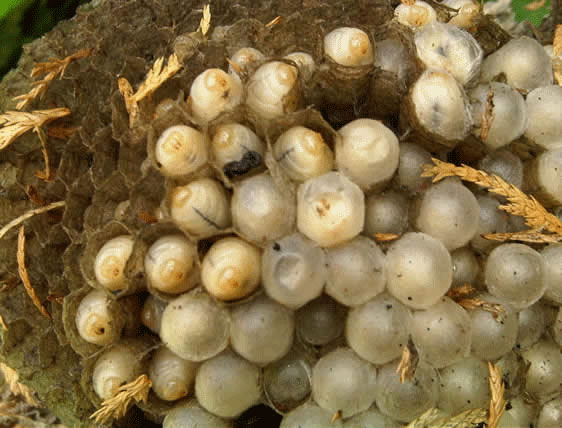
Eventually the queen will only have the job of laying eggs and the nest will continue to mature. At full maturity the largest nests in the UK will contain anything from 20000 to 100000 wasps but will probably account for less than five percent of nests with most wasps nest populations in the region of 3000 to 10000.
In some species such as the Hornet (Vespa crabro) this number will be far less, with only a few hundred individuals.
Climate plays a large part in population numbers in general. This is due to what might be termed the generation time in other words the time it takes for an egg to become an adult. In cold weather this could be four weeks, but in an exceptionally hot summer this could be only a week.
The best conditions are hot with good amounts of rain as it produces an increase in flying insect numbers and ensures the nutritional needs of the nest are easily met.
Later in the summer or as the colony matures, males will develop and leave the nest to mate. Males do not sting as they do not posses the modified ovipositor or egg laying tube that their mother and sisters posses.
At the same time new queens will also be emerging generously equipped with a fully functional sting. Once mated they will normally go into hibernation where they will emerge to begin a new colony.
If conditions are mild, social wasps in the UK will mature more quickly and the emerging queens will create a new nests in the same season. This has been seen in a number of species in particular the median wasp (Dolichovespula media).
Social Wasps have a reciprocal relationship with the developing brood. As the wasp larvae are fed they are able to produce a sticky treat for the adults. The larvae produce a liquid for the adults containing enzymes needed by the adults in a transaction called trophallaxis.
This might be viewed as an adhesive that helps bond the loyalty of the adults to the larvae and indeed the colony as a whole.
Male wasps have elongated abdomens, the sting is absent and they are usually much more hairy than the females, and the coloration of a male hornet can be quite stunning. The photo at the top of the page shows a newly hatched male leaving the nest and his hairy thorax can be seen quite well.
What Happens To Wasps at The End of The Year?
As the summer draws to a close the temperature and prevailing conditions begin to make life for wasps, increasingly difficult. As the nest matures and the queen stops laying her precious eggs, the remaining larvae become future males and queens.
The males die after mating and the new queens continue to hunt for a short time before settling into a suitable hibernation site for the winter. What we regularly encounter in November and December is the phenomena of wasps entering homes form beneath floors, through holes in walls and ceilings and also down chimneys.
As the seasonal temperatures fall, the wasps remaining in the nest become increasingly disorientated by the effects of cold on their central nervous system similar to that of hypothermia in humans, and also a shortage of food from both external sources e.g. insects and fruit etc and from larvae in the colony.
All in all they experience something of a famine and this causes them to wander into areas of a property where they would otherwise have no reason too.
Also as the nights grow shorter it's not unreasonable to suggest that the wasps would be more likely to explore the cavity in which they nest and discover new exits from the nest that appear to take them into warm sunshine, only to discover it's actually a bulb in someones bedroom.
What is The Point Of Wasps?
it must be stressed that wasps are remarkable insects that form an integral part of the wider eco-system. Removal of these insects is only required as a last resort - be kind to wasps and respect their space and chances are, they will be kind to you.
